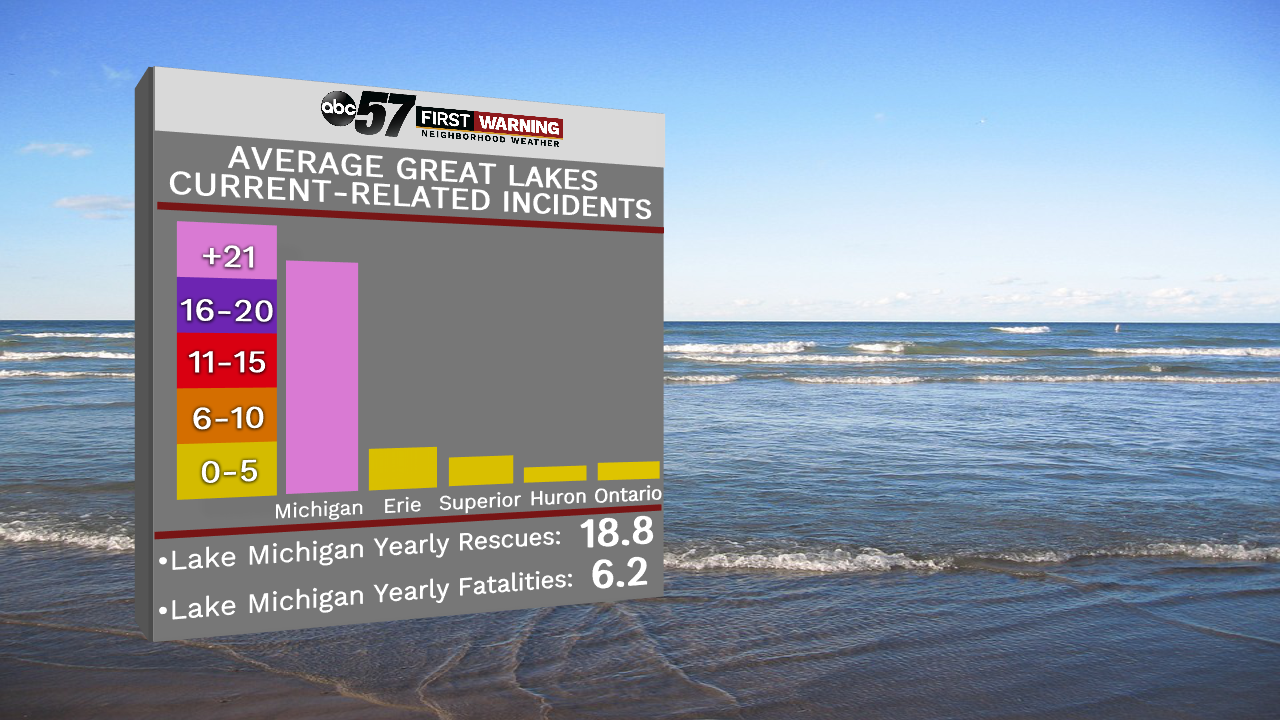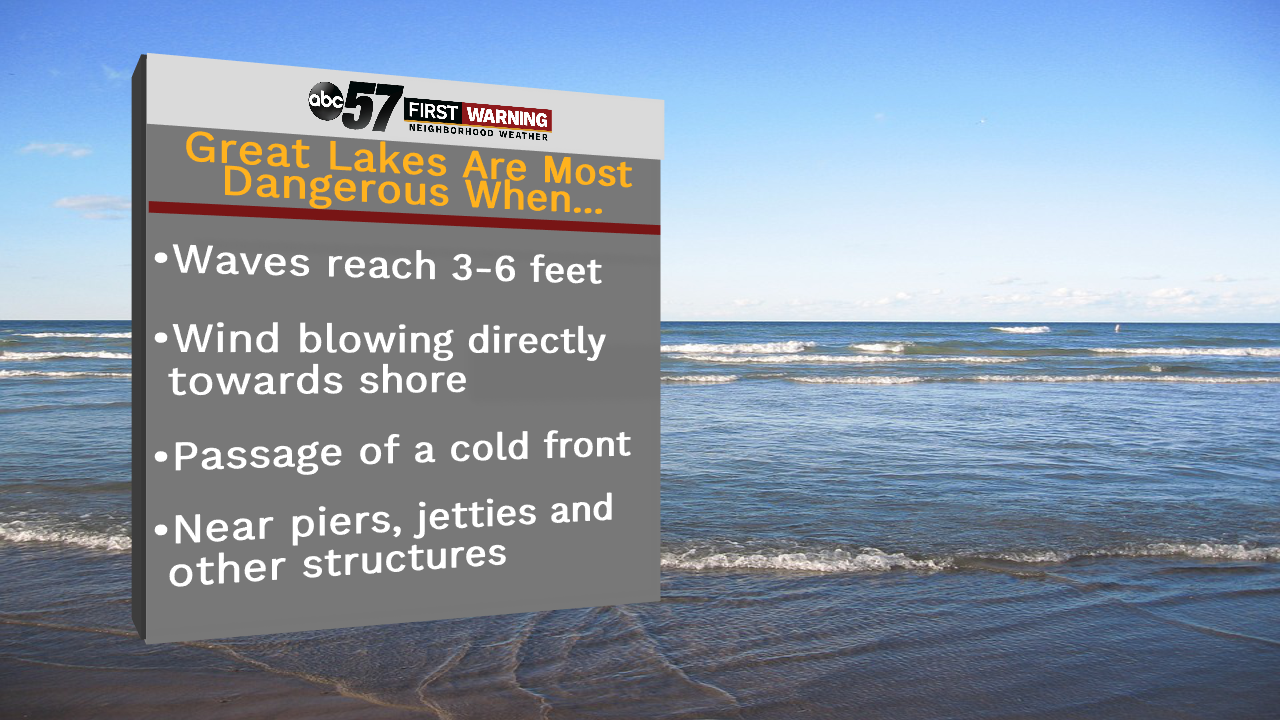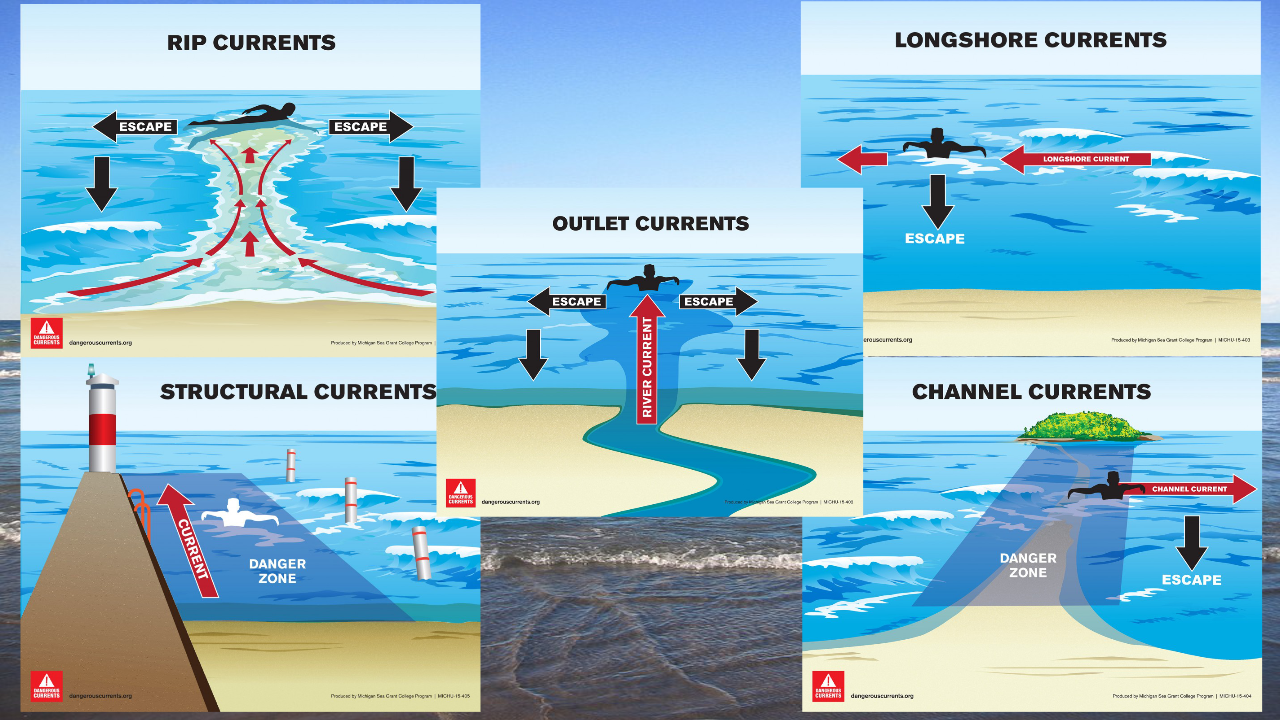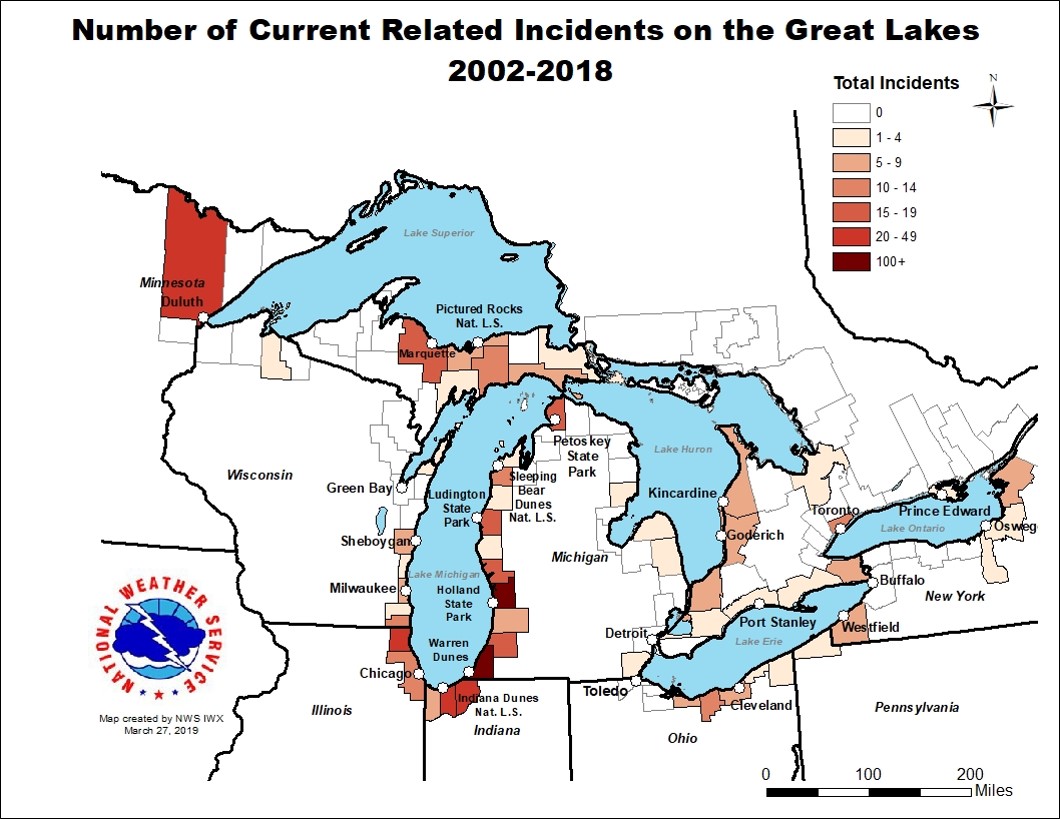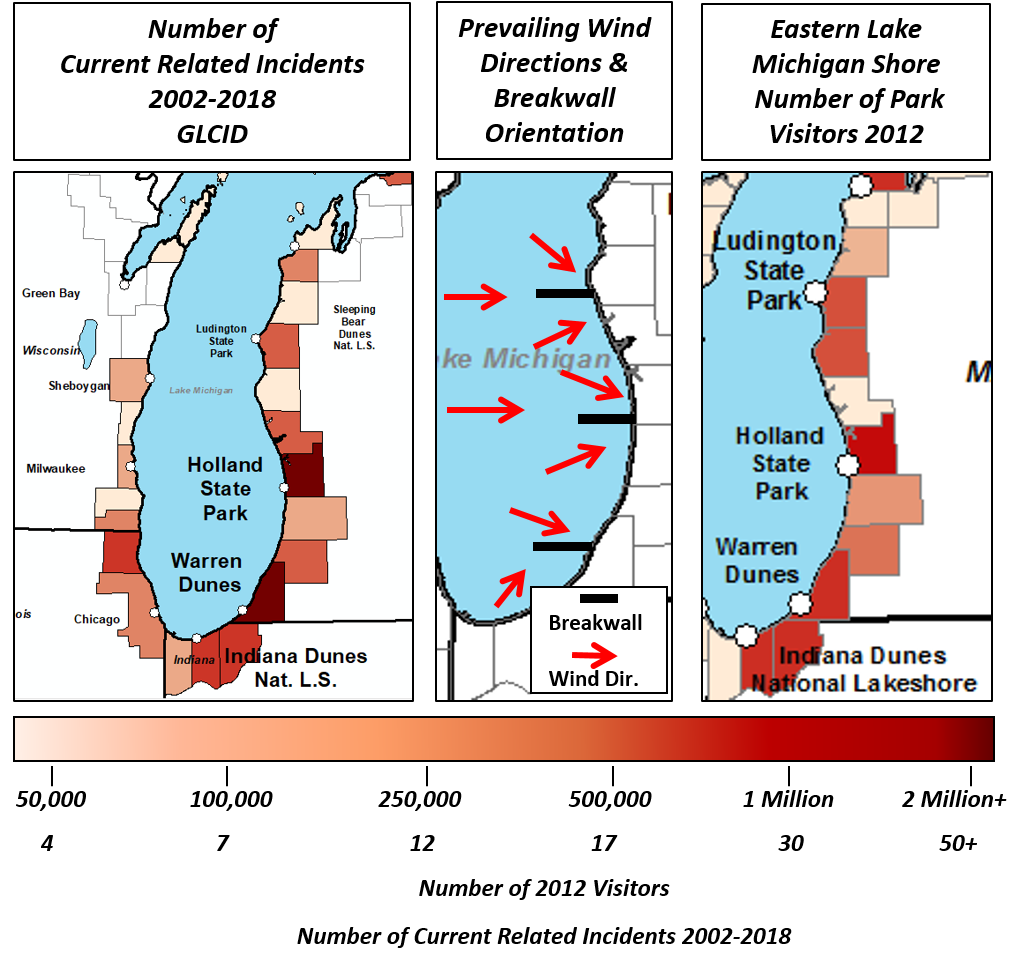Swimming can be a dangerous activity if proper precautions are not taken. That is especially true for the Great Lakes with Lake Michigan being the most dangerous.
That's because Lake Michigan is oriented in a way (north to south) that allows for the weather and waves to create currents quite often. When waves reach 3-6 feet and the wind is blowing directly onto the beach, drownings surge. In addition, many beaches along the eastern side of Lake Michigan have sandbars and breakwalls, which can create dangerous swimming conditions. There's also the high amount of annual visitors to Lake Michigan compared to the other Great Lakes. With more bodies in the water, there is a higher risk of rescues and drownings due to currents. There are five types of currents found in the Great Lakes. They are rip currents, longshore currents, structural currents, outlet currents, and channel currents. It's best to avoid swimming near piers, jetties, rocks, river or stream outlets, channels, and on red flag days to stay safe from potentially dangerous currents. It's these currents that can make Lake Michigan very dangerous. Between 2002 and 2018, there were more than 400 current-related incidents in Lake Michigan. That includes both rescues and drownings. Lakes Erie, Superior, Ontario, and Huron combined didn't even total 100! It's important to note that there is a lack of data from the Canadian side of those four Great Lakes, so the numbers may be low. Breaking things down even more, you can see that beaches in Illinois, Indiana and Southwest Lower Michigan have seen the most current-related incidents. Beaches in Porter, La Porte, Berrien, Van Buren, and Ottawa Counties lead the way. Here's how those counties stack up from 2002 to 2018:•Porter County, IN: 15 rescues; 9 fatalities
•La Porte County, IN: 19 rescues; 3 fatalities
•Berrien County, MI: 37 rescues; 21 fatalities
•Van Buren County, MI: 12 rescues; 5 fatalities
•Ottawa County, MI: 119 rescues, 13 fatalities
Again, each of those counties see a very high number of visitors each year, which is likely why the totals are higher, according to Megan Dodson, a meteorologist with the National Weather Service in Northern Indiana. Regardless, those counties have seen the most current-related rescues and fatalities in all of the Great Lakes.Dodson went on to say that Berrien County has "a really favorable, gentle beach slope, and that can allow water to pile up more efficiently near the shore and cause a lot of currents."
In fact, Berrien County saw more current-related swimming fatalities (21) between 2002 and 2018 than any other county in the entire Great Lakes region!
It's not just current-related incidents, though. Rescues and drownings unrelated to currents occur on the Great Lakes as well. The Great Lakes Surf Rescue Project actually keeps tallies on the total number of drownings in the Great Lakes each year.
Through July 4th, there have been 22 total drownings with 13 of those occurring in Lake Michigan. Here's how every other year since 2010 stacks up:
•74 drownings in 2010
•87 in 2011
•99 in 2012
•67 in 2013
•54 in 2014
•55 in 2015
•99 in 2016
•88 in 2017
•117 in 2018
You may be asking yourself why this year's total of 22 thus far seems low. Well, according to Dodson, the most active time of year for rescues and drownings hasn't arrived quite yet. She says mid-July thru early September is the most active time of year for incidents on the Great Lakes.

